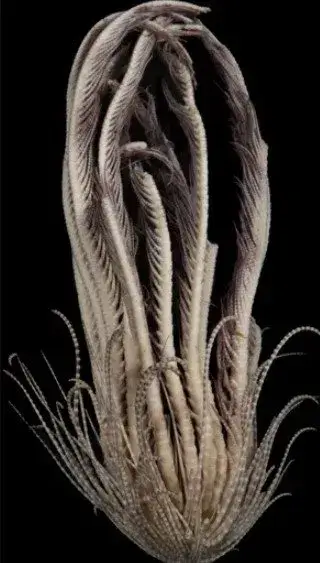
Discovery: Unknown 20-Limbed Creature Found Near Antarctica
New species of sea monster with 20 arms is found lurking in the frozen seas around Antarctica
Recently, off the coast of Antarctica, scientists have captured a peculiar sea creature.
As reported by the Daily Mail, this creature possesses a unique strawberry-like body shape and boasts 20 limbs.
Scientists consider this to be a rarity, as such a morphology is nearly unparalleled in the realm of marine organisms.
The discovery of this extraordinary creature predates the onset of the global coronavirus pandemic.
During that time, researchers were focused on studying the Promachocrinus group of marine animals, also known as Antarctic feathered stars.
A Raytheon Contractor In Antarctica, Claims A Base Is Conducting “Deep Space Communications”
Nevertheless, this new revelation has added an additional layer of mystery to an already intricate understanding of Antarctic biology.
It is noteworthy that over the span of several years, scientists have identified and described eight distinct species of sea creatures that inhabit Antarctic waters at depths ranging from 19 meters to two kilometres.

Four of these species turned out to be so distinct from known organisms that classifying them became a true enigma for scientists.
It was through the dedicated efforts of experts who conducted DNA analyses and studied the physical morphology of the discovered creatures that part of this mystery began to unravel.
The newly identified species has been named Promachocrinus kerguelensis. Alongside its unconventional limbs, a distinguishing feature of this species is its array of colours.
The shades exhibited by these possessors of twenty flexible limbs can span from purple to deep red, crafting a breath-taking spectacle in the underwater world.
* * *
Must Have: I highly recommend purchasing “Beneath the Dark Ice,” a gripping book that unveils the mysterious truths hidden beneath the icy expanse; it’s an exhilarating journey you won’t want to miss.
* * *
NEXT UP!
Ex-USAF Col. Testified Extraterrestrials Do Not Allow Nuclear Weapons In Space
During the Cold War, the United States conducted the largest nuclear test in outer space, 400 km above the Northern Pacific Ocean. The results were devastating. More such testing would have destroyed Earth’s magnetic field that is why outer-space nuclear testing was banned. Moreover, some accounts of the US military personnel including NASA astronauts convey that the extraterrestrials were behind the nuclear missile testing in outer space, and they even put surveillance on the nuclear facilities on Earth.
In the “Sirius Documentary,” hosted by UFOlogist Steven Greer, US Air Force retired Colonel Ross Dedrickson testified that he observed UFOs over the nuclear facilities in which he was assigned. Besides, he said the extraterrestrials were not allowing nuclear weapons in space. They stopped the nuclear missile that was sent to detonate on the lunar surface.
The US was in the urge to demonstrate its power to the Soviets.
* * *
READ MORE: 600 Million Year Old Fossils of Tiny Humanoids Found In Antarctica
Read more on Antarctica’s Forbidden Secrets: Hidden Pyramid In Antarctica Discovered By History Channel
Telegram: Stay connected and get the latest updates by following us on Telegram!
We’d love to hear from you! If you have a comment about this article or if you have a tip for a future Collective Spark Story please let us know below in the comment section.
